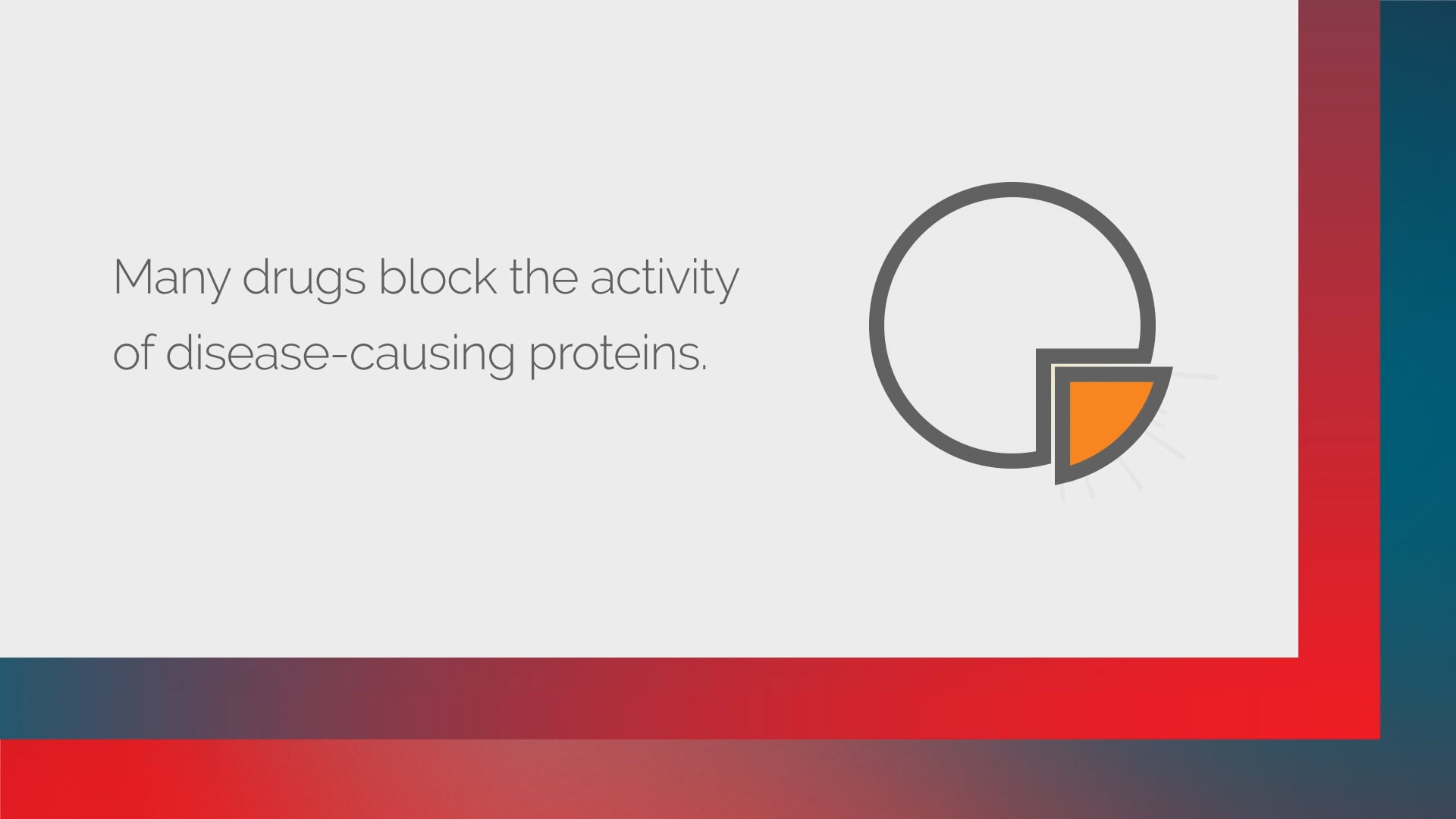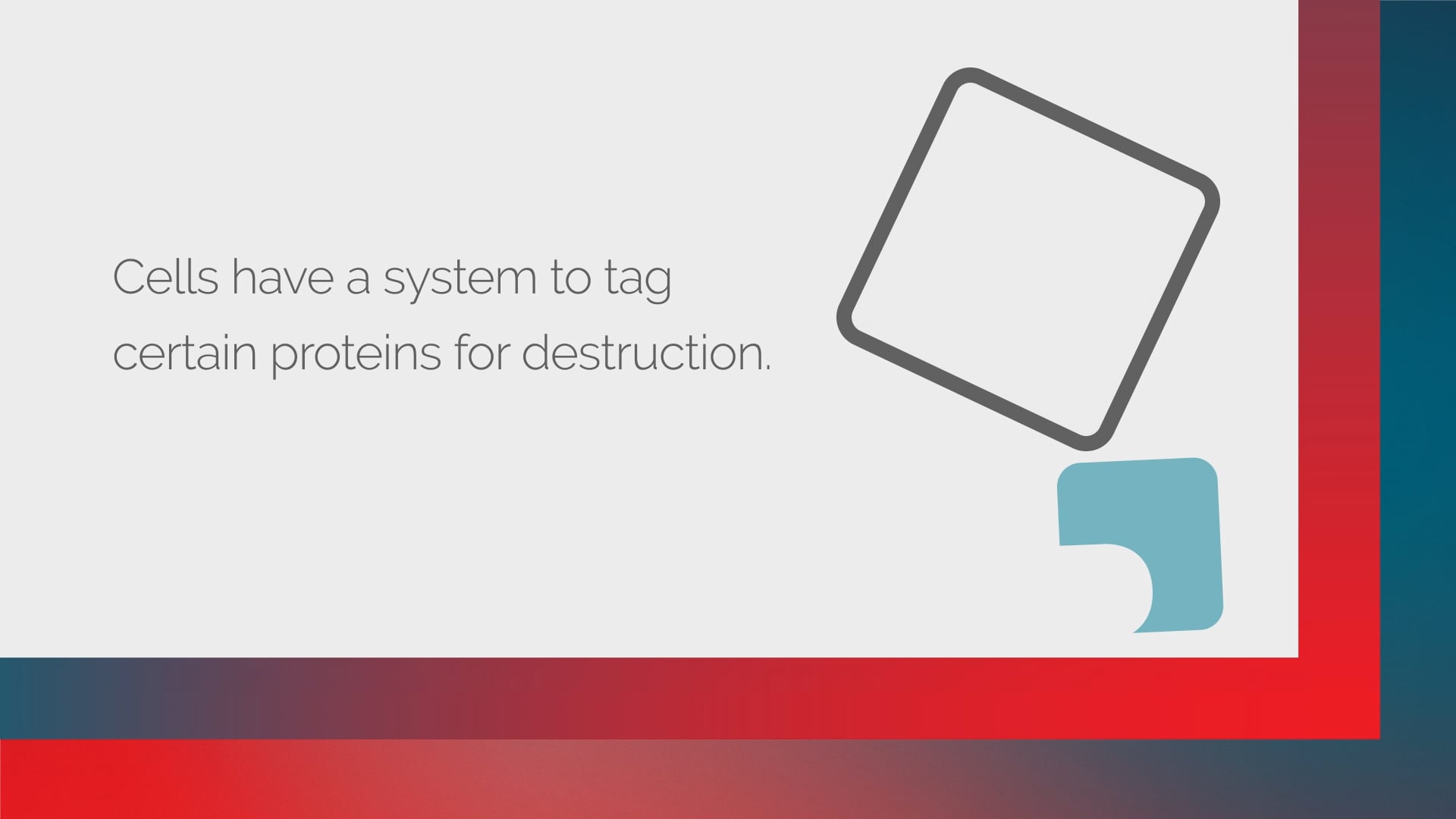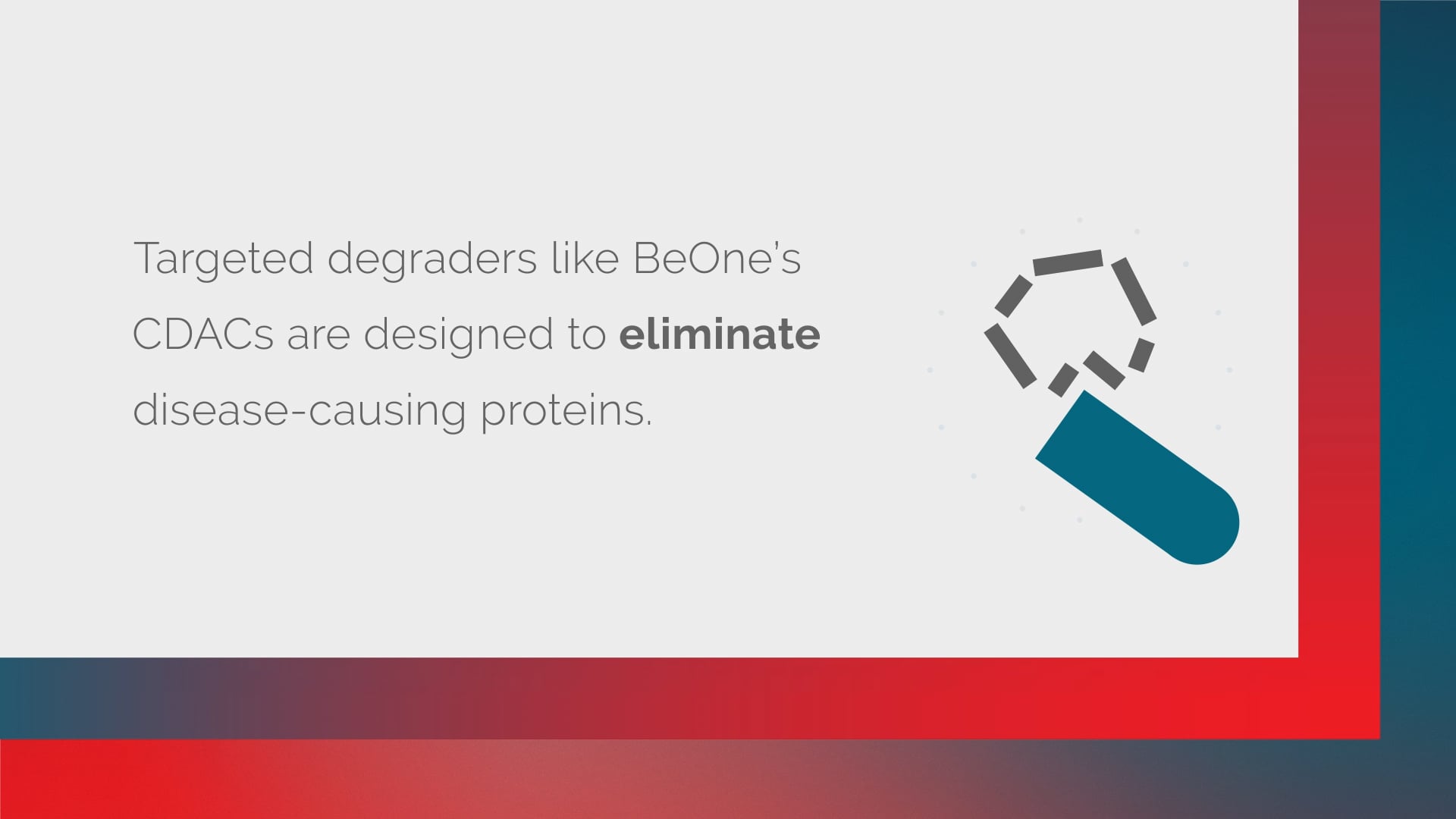Pioneering Protein Degradation with CDACs
What if we could eliminate selected disease-causing proteins?
It’s an appealing idea, and at BeiGene we BELIEVE we are making it possible with our targeted protein degrader technology:
Chimeric Degradation Activation Compounds
CDACTM
Unlike conventional inhibitor drugs that typically work by binding to and blocking activity of target proteins, CDACs and other degraders work by hijacking a cellular protein recycling process to eliminate target proteins.

Why do we need new approaches to drug discovery?
Proteins may cause or contribute to diseases as a result of their activity, abundance, shape, binding partners, location, or a combination of these and other attributes.
Conventional drugs can be effective at blocking certain activities, but the other properties can be more difficult to address with pharmacologic interventions. By eliminating the target protein, degradation offers a way to address disease targets that have not been amenable to other therapeutic approaches – this is sometimes called ‘drugging the undruggable’. Because of the way degraders work, they may also be effective toward targets that have acquired drug resistance mutations.

How do CDACs work?
CDACs function as molecular matchmakers, recruiting components of the cellular recycling machinery to act on target proteins that they would otherwise ignore. As relatively large ‘small molecules,’ CDACs have two distinct molecular modules linked together.
One end of each CDAC molecule is designed to bind the disease-target protein. The other end binds to a cellular factor called E3 ligase which is part of the protein recycling machinery. When the CDAC pulls these two components together, the E3 ligase system tags the target protein with a small molecule called ubiquitin.
The ubiquitin tag is a label that triggers destruction of the tagged protein by the cellular proteasome system. The interaction brokered by the CDAC may be transient, but as long as the target protein receives a ubiquitin tag, it is destined for destruction. The CDAC can move on to tag the next target, and the next, so a little bit of the CDAC may be able to get rid of a lot of target protein.
